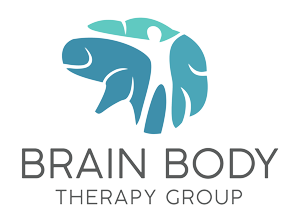"Where you look affects how you feel"
What is Brainspotting?
Developed by Dr. David Grand in 2003, Brainspotting is based upon the idea that what’s going on inside our brain is directly related to where we focus our eyes. To quote Dr. Grand, “where you look affects how you feel”.
As a focused treatment technique, Brainspotting aims to alleviate negative experiences caused by traumatic memories as well as help reduce symptoms of many issues clients struggle with, including but not limited to anxiety, depression, addiction and grief. Brainspotting.com states: "Brainspotting works with the deep brain and the body through its direct access to the autonomic and limbic systems within the body’s central nervous system. Brainspotting is accordingly a physiological tool/treatment which has profound psychological, emotional, and physical consequences."
Brainspotting taps into the body’s innate ability to heal in order to reduce and eliminate the impact of unresolved trauma, negative beliefs, and emotional distress.
How does brainspotting work?
Brainspotting posits that certain eye positions relate to specific emotions or traumatic memories. It is believed that stimulating a Brainspot taps into a person’s natural ability to self-heal, essentially moving the memory from one part of the brain, the limbic brain, to another, the cerebral cortex, where it can be processed, rather than sit stuck as is what happens with unresolved traumas/issues.
who does brainspotting work with?
Whether this is your first time seeking therapy, or you have been in therapy before and are seeking a therapist with new techniques, Brainspotting can work for you.
Brainspotting is effective for a wide variety of emotional and somatic conditions. Brainspotting is particularly effective with trauma-based situations, helping to identify and heal underlying trauma that contributes to anxiety, depression and other behavioral conditions. It can also be used with performance and creativity enhancement. Brainspotting gives the therapist access to both brain and body processes. Its goal is to bypass the conscious, neocortical thinking to access the deeper, subcortical emotional and body-based parts of the brain.
What does a brainspotting session look like?
In a typical Brainspotting session, a client will bring up an "issue" they are struggling with to some degree. The therapist will ask the client to share a little bit about the issue and where they notice "activation" in their body, such as tension in their hands, tightness in their chest, hard to swallow, etc., when speaking or thinking about that issue in that current moment. The client is then asked to notice the intensity level of this activation using a scale of 0-10 with 10 being the most. The therapist then holds a pointer and slowly guides it across the client's field of vision. When a certain point seems to bring up that stressful memory or evoke an uncomfortable or painful physical response, the therapist encourages the client to focus on that spot and notice what "comes up" in the brain and body while remaining focused on that spot. The therapist and client will process through the experience at the end of the session.
This is just a snapshot of a "typical" Brainspotting session, as there are many other pieces to this process and your therapist will more fully explain and explore with you.
Finding Peace and Freedom with Brainspotting
Brainspotting allows for true healing in the brain and body. It breaks open the capsule of unresolved past trauma that continues to impact our present. Brainspotting along with living life mindfully, can set you on a course to true peace and freedom.
To learn more about Brainspotting, Psychotherapy Networker shines a spotlight on Brainspotting and discovering another path to healing.
